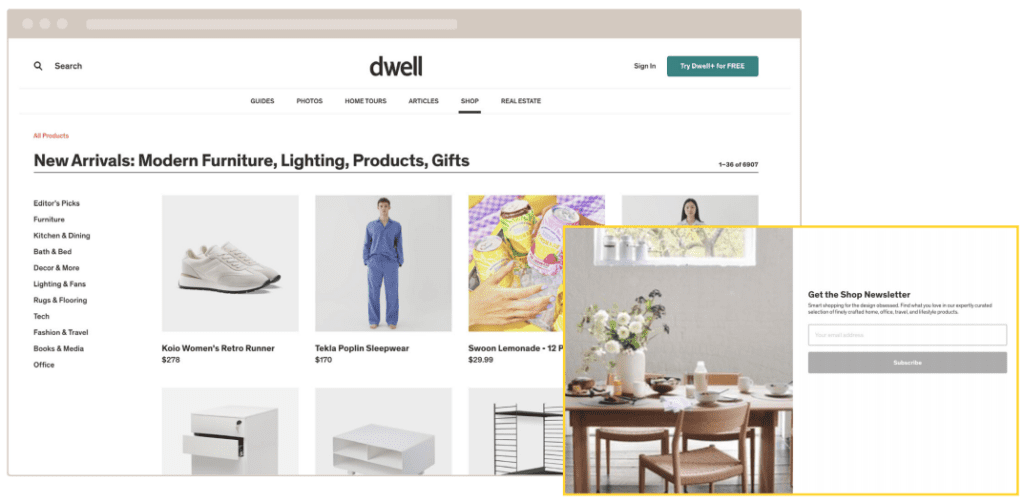|
Getting your Trinity Audio player ready...
|
Global eCommerce sales hit $4T in 2020 and are expected to reach nearly $5T in 2021, according to eMarketer. The affiliate market alone is worth over $12B, and a “growing market represents growing opportunities,” states a new guide by publisher technology platform, Sovrn.
The guide, “5 Ways to Make Affiliate Marketing Work for You in 2021,” shares key affiliate marketing strategies publishers can use to grow their eCommerce revenues. “Affiliate marketing is one of the most logical areas for publishers to expand into,” according to the authors. “It’s simple to get started, has massive potential, and every publisher, no matter the type or category, has the opportunity to succeed.”
“Essential part of any monetization strategy”
They note how eCommerce helped publishers offset rapidly declining advertising revenues in the early months of the Covid-19 pandemic. Data from Sovrn’s //Commerce network shows that publishers using affiliate marketing “were better-protected from economic shifts than those relying solely on advertising products.”
Although certain categories, like travel, dropped, there was a 15% increase in commercial clicks in 2020 as people shopped online more than ever before. The guide predicts this trend will continue in the coming years.
eCommerce has become an essential part of any monetization strategy, and affiliate marketing is the fastest, most flexible way for publishers to diversify their revenue sources.
5 Ways to Make Affiliate Marketing Work for You in 2021
Here are tips from the guide that will help publishers of all kinds and sizes drive revenue via affiliate marketing.
“Any channel that allows you to include a monetized link”
The most common approach is creating eCommerce driven content. Publishers like Digital Trends, The New York Times’ Wirecutter and BuzzFeed use this strategy. They embed purchase links in product reviews and listicles, like in this article on BuzzFeed: 18 Of The Best Shower Curtains You Can Get On Amazon.
There are other ways to do the same, for example, publishers who are not overtly commercial, or deal with products like BuzzFeed and Digital Trends, can follow the website Brain Pickings’ strategy. The publisher integrates monetized links into the text, in a manner which encourages the reader to dive deeper into the topic being explored, according to the guide. It shares the example of an article on author Herman Hesse in Brain Pickings. It has links to Amazon for Hesse’s book “If the War Goes On…” as well as the option to search for it via a public library.
Publishers can expand the reach of their affiliate marketing by sharing links on their social media channels.
Any channel that allows you to include a monetized link in a description or profile is an opportunity.
5 Ways to Make Affiliate Marketing Work for You in 2021
Tile placements are another effective way to earn affiliate revenues (especially for publishers who are not traditional content publishers). Publishers can place semi-permanent or permanent tiles that allow readers to quickly navigate to merchants’ websites. “By placing these merchants in front of readers immediately, publishers can build associations between their content, their readers, and high-quality brands,” the guide states.
In particular, publisher search engines are a perfect fit for affiliate marketing because they often double as shopping engines, with readers having an immediate purchase intent.
A publisher specializing in fashion content for example, can create permanent tiles to favorite stores. “Creative placements such as these mean you’re not depending on the performance of individual pieces of content—such as articles—to drive clicks,” the guide suggests.
“Build the strategy that works best for your long term goals”
Publishers are trusted sources that readers go to when looking to buy something. Apart from helping them with product reviews and listicles, publishers can also consider offering a curated shopping experience. For example, Dwell magazine features products tailored to fit with their audience preferences.
Just like BuzzFeed and other similar publishers, Dwell offers readers links to products within their articles. When the reader decides to make a purchase, the Dwell store presents an aggregated collection of other products that are in line with their interest. These products are linked out to a third party, opening up opportunities to drive earnings.
Dwell also prompts readers to sign up for a shopping specific newsletter that’s a natural extension of their editorial content. It allows the publisher to deliver monetized content directly to its readers’ inboxes.
These types of strategies—in which commercial content is distinctly separate from editorial content—can be ideal for publishers who want to maintain a clear delineation for their readers. This way, even a publisher who doesn’t want to create regular commerce content can build a revenue-generating destination that helps to establish them as trusted shopping destinations.
5 Ways to Make Affiliate Marketing Work for You in 2021
“Every reader touchpoint is an opportunity for creative monetization,” the authors write, “and you have the ability to build the strategy that works best for your long term goals.”
“Critical to the success of any eCommerce strategy”
Rounding up the strategies, the guide suggests publishers to maintain strong merchant diversity. That is, they should work with a lot of merchants rather than depend on a select few. This will allow them to get the best affiliate rates, as well as stay protected from the whims of merchants.
For example, both Amazon and Walmart slashed their commission rates in 2020 citing the pandemic. This led to significant losses for publishers who were largely dependent on them. Publishers can use platforms like Sovrn //Commerce to track merchant performance and rates on a regular basis. It also helps them find merchants and products that fit with their audience.
“No matter who you are,” it concludes, “one thing is key: reader trust.”
Establishing yourself as a trusted authority that your audience can turn to is critical to the success of any eCommerce strategy.
5 Ways to Make Affiliate Marketing Work for You in 2021
The full guide is available from Sovrn:
5 Ways to Make Affiliate Marketing Work for You in 2021
Disclosure: What’s New in Publishing is wholly owned by Sovrn Holdings, Inc.




